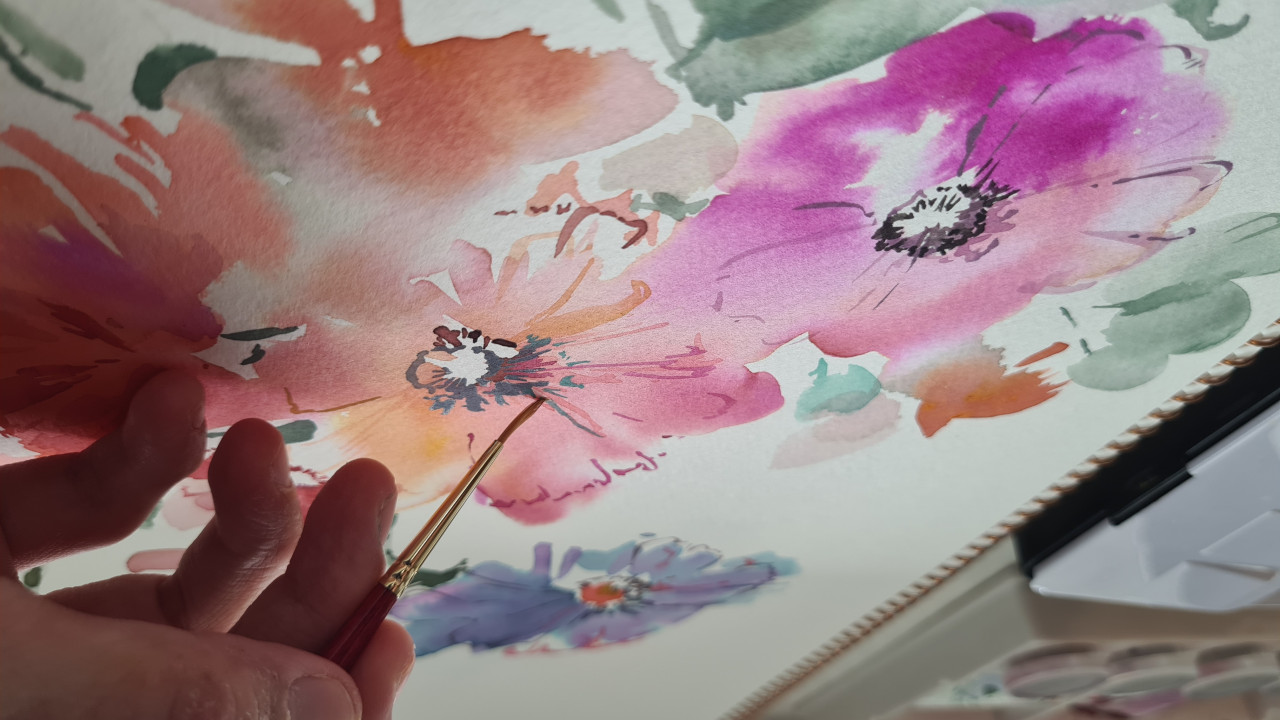
Robert Draws – Micro-detail painting is a unique and demanding art form. It requires a keen eye and steady hand. Behind every tiny stroke is an artist’s ability to capture extreme precision. This art form focuses on minute details that often go unnoticed in larger artworks. It takes years of practice and immense dedication to master. Artists who specialize in micro-detail painting often spend hours perfecting their craft.
Micro-detail painting involves creating intricate designs on surfaces that are smaller than the average. Every brushstroke is considered important, and each detail contributes to the bigger picture. This technique has gained popularity in various fields, from miniature art to custom designs on model figurines. To paint micro-details, artists must use special tools and techniques. Tiny brushes, magnifying glasses, and steady hands are essential.
Painters carefully choose their materials to ensure the smallest details are visible. Acrylic paints are often preferred due to their vibrant colors and smooth application. Some artists also use oil paints for their richness and texture. Every choice is made with precision. The surface also plays a crucial role in the final outcome. A clean, smooth surface ensures that the details are crisp and clear.
“Read about: The Art of Looking Back: A Ukiyo-e Masterpiece”
Creating such small, detailed works of art is not for the faint-hearted. Artists face numerous challenges while working on micro-detail pieces. One of the most significant challenges is maintaining focus for extended periods. Even a slight mistake can ruin the artwork. Artists must often work in a quiet, undisturbed space to keep their concentration. Every brushstroke must be deliberate and accurate.
Another challenge is the physical strain that comes with painting such tiny details. The hand and eye coordination required can be exhausting. Artists often experience hand fatigue due to the delicate strokes needed for the work. A steady hand is essential for ensuring that no detail is overlooked. Patience is a key virtue for any micro-detail artist.
Micro-detail painting appears across various art forms. One of the most common areas where this technique is used is in miniature paintings. These tiny masterpieces often depict scenes from everyday life or historical events. Some artists create portraits so small that viewers can only appreciate them with a magnifying glass.
In the world of model painting, micro-detail plays a crucial role. Hobbyists and professionals alike spend hours painting intricate designs on models. From tiny figures in dioramas to detailed parts of vehicles, every inch of a model receives precise attention. Additionally, micro-detail painting finds its place in customizing items like jewelry, watches, and even shoes.
Moreover, in the digital age, micro-detail painting has expanded into the world of digital art. Artists now use graphic design tools to create highly detailed pieces. These pieces can be zoomed into for every intricate detail. The techniques used in digital micro-detail painting are similar to traditional methods, but they benefit from the added advantages of digital tools and resources.
“Read more: The Sacred Bloom: Symbolism in Madonna of the Carnation”
Micro-detail painters employ various tools to achieve the smallest of details. The choice of brushes is crucial. Artists use brushes with extremely fine tips, sometimes smaller than the width of a human hair. These brushes allow them to paint the smallest features, such as the intricate lines of a person’s face or the delicate petals of a flower.
Magnifying glasses or magnification lamps are often used during the painting process. These tools help artists see the fine details more clearly. It is not uncommon for artists to work under intense lighting to prevent any shadows from distorting the tiny details.
In addition to fine brushes and magnifying tools, precision is improved with practice. Artists spend years refining their techniques to achieve perfection in their work. The speed at which they work also improves over time, allowing them to handle smaller details with greater ease.
Patience is perhaps the most important aspect of micro-detail painting. The painstaking process requires time and dedication. Artists must wait for layers of paint to dry before moving on to the next detail. Rushing through the process can lead to mistakes or ruined work. Each layer of paint is carefully applied to ensure that the final product is flawless.
It is not unusual for a single piece of micro-detail artwork to take several days or even weeks to complete. Each tiny section is painted with care, often involving multiple layers of paint. The slow and steady pace is part of what makes these pieces of art so remarkable. The end result is a masterpiece that demonstrates the artist’s commitment to their craft.
With advancements in technology, micro-detail painting is evolving. Artists now have access to new tools that make the process more efficient. Digital painting software, for instance, allows artists to zoom in on their work and refine details with ease. The use of 3D printing has also opened new possibilities for creating intricate designs.
Social media has also played a role in the growth of micro-detail painting. Artists can now share their work with a global audience, gaining recognition and appreciation. Online platforms allow them to showcase their skills and inspire others to pursue this challenging art form.
Micro-detail painting continues to thrive in today’s world. The dedication and patience required to create these tiny masterpieces will always be admired. It is an art form that showcases the beauty of precision and the skill of the artist behind the brush.